Where to Shoot a Kidnapper

Part A: Taking it to the Streets
The Need to HAVE A PLAN for Hostage Situations
In Hostage Rescue in the Home, we discussed fundamentals of movement and how they can help you take back family members who have been kidnapped alive, before they are outside of your home and in the wind.
There is a time for slowing things down in Hostage Rescue, and a time for speeding things up. When a hostage is being removed from the scene is NOT the time to wait.
If time is of the essence, there certainly will not be time to make up a plan. You should have plans made–and practiced, exercised, and refined–already.
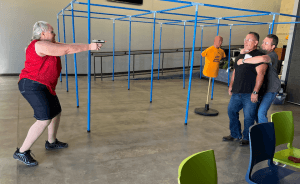
The Need to be Visibly and Audibly RESOLUTE in Hostage Situations
“Heretofore, flak batteries had been manned by German gunners who were both accomplished and relentless in their craft.”
–William R. Cubbins, B-24 pilot, about anti-aircraft fire in the skies over Romania before August of 1944 (The War of the Cottontails: Memoirs of a WWII Bomber Pilot, p. 236)
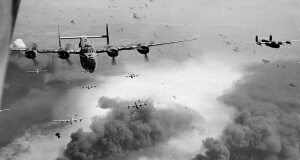
If someone is carrying your screaming kicking child out of your home, or dragging a woman toward his car so he can take her into the desert, rape her, and dump her down a mine shaft, you, as a responsibly armed citizen, need to be both accomplished and relentless in your craft.
By accomplished, I do not mean you have won trophies in competitions, although there is nothing wrong with that. I mean:
- You have practiced enough that you KNOW your bullets will go where you want them to
- You have participated in role playing, reality based, scenario driven tactics and Use of Force exercises, and can think on your feet
- You know your own limitations well enough to know when, and when NOT, to shoot, and
- You have empty hands skills, which may be necessary.
He (it’s still almost always a he) will threaten dire consequences if you do not cooperate in their kidnapping. You will desperately want to believe his lies, that if you just do what he says, no harm will come to the hostage. That is absolutely untrue. In that battle of wills, you must be resolute.
Again, Never Give Up Your Gun
We also mentioned this in Hostage Rescue in the Home, as well as in Movement to Contact, but it’s so important it bears repeating. The first thing he will demand is that you drop your gun.
What happens if you drop your gun and kick it over to him? HISTORICALLY, ALMOST ALL COPS WHO HAVE GIVEN UP THEIR GUN WERE SHOT WITH THEIR OWN GUN, AND THE HOSTAGE WAS KIDNAPPED / KILLED ANYWAY.
Giving up your gun always works in the only experience your jury will have with hostage takers, which comes from television. It almost never works in the real world.
Most of those reading this are probably armed outside the home as a matter of course. But you should also practice closing with the bad guy to rescue the hostage if you are unarmed, say, caught with your gun in a safe when you encounter a hostage taker in the hallway of your home, or if it happens in a so-called “weapon free environment.”
Whether or not you are armed, he will also demand that you back off. That seems like an easy way to diffuse tensions, but it also does not work. It only gives the hostage taker more control, and makes you seem like less of a threat to him. It’s important that he perceives you as a threat, which makes it more likely that he focuses his attention–and his weapon(s)–on you.
Except in very exceptional circumstances (such as hostage rescue), closing with the bad guy is almost never advisable. Our projectile launcher (gun) projects power over distance, and can be a liability up close. But in hostage situations, getting closer is a must. It’s not really “advisable” then, but better than letting the hostage be killed or removed from the building. We close with the hostage taker so we become such a threat to him he decides to take his knife or even gun from the hostage’s throat and point it at us. If we’re close enough, we can off line / control it while the hostage gets away.
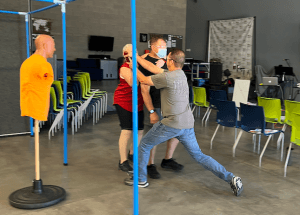
Our closing with him is a visible indication of our resolve.
The other way we indicate our resolve is with our voice. Do not scream, but speak loud enough for him to hear you through any auditory exclusion he may be experiencing. Act bored and in control (this takes practice). When he says “Drop your gun or I’ll kill him,” say “That’s never gonna happen. I am never going to give up this gun. But I will shoot you if you don’t let him go and leave.”
You may be a real smooth talker in cantinas at closing time, but don’t count on waxing eloquent in a high-stakes interpersonal confrontation (and what could be higher stakes than hostage rescue?) without practicing verbalization ahead of time. It’s as important as practicing your shooting skills.
How to Practice These Skills
It’s dirt simple. Have two friends play the roles of Hostage and Hostage Taker, using a rubber knife or inert replica “red gun” (which may or may not be red) held to the “victim’s” throat or head. Using an inert replica of your own firearm, point it at the Hostage Taker and demand that he drop the weapon and leave, as you maneuver around (with or without a Hostage Rescue partner) to get a clear line of fire. Have the Hostage Taker yell at you to drop your gun. Then practice telling him or her what you would tell a real hostage taker, how you would say it.
Part B: The Physiology of Terminal Ballistics
The Need to Have a PROTOCOL in Hostage Situations
For our purposes here, the term “protocol” means a hierarchy of plans and backup plans; things we will do first, and then things we will do when Plan A doesn’t work.
In this world full of internet commandos and “tactical” trainers, the word “always” is used too much. There’s nothing wrong with keeping things simple, but “no battle plan survives first contact with the enemy.” It’s OK to say “I will always shoot a hostage taker in the head,” as long as you follow that with “IF I CAN. If the head is not available, I will . . .”
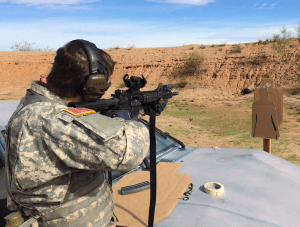
An understanding of terminal ballistics and their effects on human anatomy will provide you with a protocol of targeting priorities. You won’t have to guess, or make things up on the fly, if you’ve already established what you will do to what part of whom and what to do if that doesn’t work. In Part I of this Hostage Rescue series, we mentioned head shots. Now we’re going to give you some more options.
Target zones (places to aim) on hostage takers are, in order of preference:
- Head
- UCM (upper center of mass, i.e., the heart)
- Pelvic shot (aim at top of the Y)
- Center of available (visible) mass
“Preference” is not a perfect word here, as we would prefer not to be in this situation at all. We would prefer never to have to shoot anybody anywhere. But we don’t live in a perfect world. Perhaps I should have written “in descending order of likely effectiveness,” which is much more of a mouthful.
Head shots:
The head is still our preferred target in hostage rescue, because significant damage to the brain or central nervous system is most likely to cause rapid incapacitation. Key word, rapid.
Downsides of shooting the head:
- The head is highly mobile
- It is armored
- The target area is only the size of a softball
- Peripheral hits may glance off
Two case studies of head shots:
Derbe D
One of our students testified, from personal experience, about the rapid effectiveness of head shots. While working as a “repo” (property repossession) man in East Los Angeles, Derbe was shot in the back of the head, and across his back. The guy who thought it was OK to drive a car without paying for it also thought it was OK to shoot Derbe with a .357 mag revolver loaded with .38 Specials.
The head shot blinded Derbe instantly (his sight returned over a very long period of time). One shot crossed his back and blew off a spinous process (the “shark fin” of a vertebra), fortunately not paralyzing Derbe (shots that strike the cylindrical body of a vertebra typically paralyze). Another shot grazed him. Fortunately, Derbe’s repo partner got him out of there and to a local trauma center. In testimony to the ineffectiveness of California’s draconian gun laws, physicians in East LA are very experienced in treating GSWs. They saved Derbe’s life.
Derbe and Gabbie Giffords survived being shot in the brain, in part because their fractured skulls allowed room for the swelling brain to expand. What’s relevant in terms of Hostage Rescue is, both were hors de combat (combat ineffective) after a single brain shot.
Adam Miller
Another key word: likely. That means not 100% guaranteed.
Shots to the brain are the most likely to cause rapid incapacitation, but they don’t always work.
On 15 Feb 2019, a disgruntled former employee killed 5 at the Henry Pratt facility in Aurora, IL. He injured a 6th employee and 5 responding officers. A .40 bounced off of Officer Adam Miller’s AR and into his brain, blinding him in the dominant eye. Miller famously switched to his opposite shoulder and eye, and said on the radio, “I’m shot–still in the fight.”

The lessons Adam Miller paid in blood to teach you are twofold.
- First, just ’cause YOU are hit in the head doesn’t necessarily mean you’re out of the fight.
- Second, just ’cause you hit the hostage taker in the head doesn’t mean HE’LL be instantly out of the fight. What that means is, be prepared for follow-on shots.
Does this mean we hose a burst at the bad guy’s head?
NO.
A head shot MUST hit. If we start to pull the trigger with the mindset that if we miss, we can just shoot again, we are less likely to make that first shot count. It must count, or we wouldn’t be taking the shot over a hostage’s shoulder in the first place.
You sending bullets into this mess is a last ditch, hail Mary move. I would be very hesitant to take such a shot–and I’m a better than average shooter–unless and until it appears that the hostage’s life is in imminent danger. The hostage taker’s actions, or words, or the situation (maybe he’s backed himself into a corner) tell you, a reasonable person, that things are about to go very badly for the hostage, or could at any second. That is why you are taking the shot. And that is why it MUST hit the specific part of the person you are aiming at.
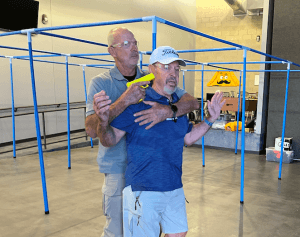
Heart shots:
If we can’t get a clean shot at the hostage taker’s head, our next choice is the UCM, upper center of mass.
We tell new pistol students to aim at the UCM as a default, because it is harder to miss in a dynamic situation. Unlike targets on the range, real bad guys don’t just stand there and let you shoot them repeatedly. And anything other than the head is likely to require follow up shots.
Generally, people who are shot in the heart, or aorta, the pulmonary arteries, or any other parts of the boiler room don’t stand up very long. But they might be conscious long enough to kill the hostage, which is why we prefer the head or cervical spine. The UCM is only our SECOND choice in hostage rescue.

Heart Shot Case Study: John Hobbs
As with head shots, heart shots don’t always take people out of the fight instantly. On 03 Mar 2014, Detective John Hobbs of the Phoenix Police Major Offender unit was hunting a murder suspect when he got shot through the heart with a .357 magnum. It knocked him down. Hobbs fought his way to his feet, firing all the way, and fatally wounded the suspect. Hobbs died later.
Hobbs’ partner Albert J. Casados was also wounded but survived.
The takeaway here: just ’cause you center punch a guy in the chest doesn’t mean he’ll be out of it. Gank the hostage away from there as soon as you can.
And no matter what happens, finish the fight, as John Hobbs did.
Please recite the following mantra out loud:
“The first thing I can expect my assailant to do, after I shoot him with my pistol, is whatever he was doing BEFORE I shot him with my pistol.”
If you say it out loud, you might eventually believe it. This is important because our subconscious expectations are based on our programming, and our programming–from movies, video games, and TV–is that most bad guys who are shot once immediately cease hostilities. In reality, most bad guys who are shot do not stop, at least not right away. So try not to be shocked when he keeps going.
Pelvic shots:
Our third choice, if the hostage’s feet are on the ground (see Kidnapping with Young Child / Baby as Hostage below), is shooting the hostage taker in the hip. Pelvic shots do a few things for us.
First, the back of the pelvis is like a great big catcher’s mitt.
Second, breaking a main landing gear can cause a plane to fall on one wing. Likewise, there are a lot of structural components in the hip that keep our hostage taker on two legs (for example, the ball joint where the femur joins the pelvis)–if they are not broken.
Lastly, the femorals and other major vessels run through there. The femoral arteries are the two main lines that run from the iliac arteries which split off from the aorta (largest blood vessel in the human body) in your abdomen and run into each leg. The nearly adjacent femoral veins are large vessels returning blood to your heart. There are numerous other blood vessels, big and small, in the pelvic region and upper legs.

Knowledge of Anatomy and Physiology is useful whether you are hunting animals or people. What does our knowledge that the femorals and a lot of musculo-skeletal structure is in there mean, in terms of practical point of aim?
We’re aiming, ideally, for one or both of the two top corners of a Y, the ends of the inguinal folds (when the subject is standing). That’s where the biggest blood vessels are, and where we are capable of damaging structure both fore and aft. Pistol bullets into the pelvic region will probably lodge in the back of the pelvis, expending all their kinetic energy in your assailant, but if we can break up any of the narrower bones in front that complete the pelvic ring on our way into the pelvic cavity, that will severely limit his mobility.
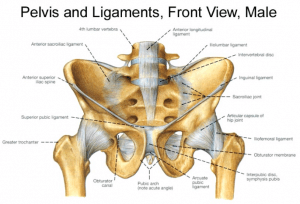
Unfortunately, as long as his computer (the guidance system of the missiles he may send your way, or at his hostage) is still on line, your limiting his mobility or forcing him to let go of the hostage is only half the battle. It would be helpful if loss of blood also forces him to lose consciousness. That usually takes longer on real people than it does on TV, but short or long it is a goal to strive for when he’s trying, or may soon try, to kill you or the hostage.
Hostage takers usually divert their attention away from the hostages to the hostage rescue team as soon as the HRT becomes a threat to them. However, at the Good Guys! store in Sacramento, CA, a hostage taker who was tragically missed when a police sniper’s bullet was deflected by a shutting door chose to execute the hostages out of sheer spite.
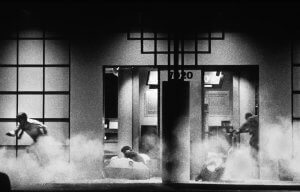
Hostages Chris McManus and Franco Lamolinara were executed by Boko Haram as the British SBS and Nigerian commandos stormed the building where they were being held captive on 08 Mar 2012.
But, getting back to pelvic shots . . .
The femorals are not as wide as they appear to be in the diagram above. I “cut down” to the femoral artery on a cadaver during one of my TacMed courses at Johns Hopkins, and I was surprised to find that the femoral, one of the largest vessels in our body, is really quite narrow (I was also surprised at how deep it was, which has ramifications for direct pressure vs. wound packing in first aid). The femoral I saw and held between my fingertips was not pressurized from inside–the guy was dead and had been in cold storage–but even if it’s three times that size when pumped full of blood it’s still pretty tiny. Don’t count on hitting it, or the adjacent femoral vein, but if you hit at the top of the Y you maximize the chances that you will. If you can hit the front of the pelvic ring, secondary missiles (fragments of bone) may damage nearby vessels for you.
Here’s what your anatomical landmarks–your aiming points–look like on a real person, wearing clothes, from the outside.
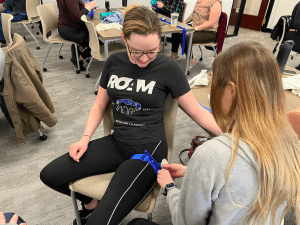
The inguinal fold can be seen in this photo, where her vertical tummy meets her horizontal legs (somewhat distorted by the tourniquet on her left thigh, but as it naturally folds on her right). We’re aiming midway along that fold. When most of us stand up, half of the fold goes away; the top of the “Y,” about where the “crease” stops, is our aiming point. It’s behind the left end of that tourniquet’s windlass.
The theory behind the pelvic shot is the same as that of a bear hunter who shoots her or his quarry in the shoulder to slow the bear down, buying time for a careful head shot. If you must shoot a pelvis, be prepared to follow up with a head shot.
Two Pelvic Shot case studies:
Gabe’s friend
When he worked for Costa Mesa PD, Gabriel Suarez had a partner who got shot in the hip. Here’s how.
In the Ye Olde days, Glocks came in a smaller box which had no foam lining. There was a hollow plastic cylinder running through the box, and the Glock’s trigger guard. This “doughnut hole” could theoretically be used to secure the box(es) by running a rod or cable through it. IT WAS MEANT FOR “DRY” (EMPTY) STORAGE, WITH THE STRIKER FORWARD BEHIND AN EMPTY CHAMBER. Several Glock owners found out that the GUN CAN GO OFF IF STORED WITH A ROUND IN THE CHAMBER IN THAT BOX.
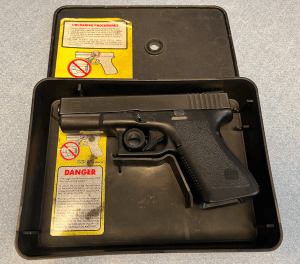
Gabe’s friend found out the hard way. When he slammed the lid of his trunk, which was full of SWAT call-out gear, shut, the Glock went off. The bullet went out through the body of the car (a Crown Vic, as I remember the story) from inside the trunk and into his pelvic region. He heard the “Bang!” but it didn’t slow him down any. They began scanning the nearby rooftops to see where the assailant was. He didn’t realize he’d been shot–and how–till later.
It’s possible he would have been more affected if the bullet had not been slowed by passing through the back of a car, and God knows whatever other intervening materials, on its way to his hip. It’s also true that as a SWAT cop, he was probably tougher than the average guy. But the fact remains that Gabe’s friend was combat effective, after being shot in the pelvic region.
As far as I know, Gabe’s friend wasn’t drunk, drugged, or deranged (although SWAT types sometimes misused anabolic steroids in those days). Your hostage taker might be drunk, drugged, or deranged. The three Ds tend to make people more resistant to gunfire.

A single sample is not necessarily representative of the population as a whole; the following case study had the opposite result.
Ron Barber
During the Gabby Giffords assassination attempt and associated mass murder of January 8, 2011, outside the Safeway at Ina and Oracle in Tucson, Ron Barber was one of the first people shot after Gabby.
Barber was struck in the side of the face, through the cheek and into his neck, narrowly missing his carotid artery, and also in the pelvic region. The later shot lacerated his femoral vein. Barber fell down immediately and was passing out when Anna Ballis applied direct pressure to the top of his Y for 30 minutes. Between Anna’s direct pressure and Pima County deputies applying Quick Clot impregnated gauze, Barber lived (Dr. Peter Rhee, Trauma Red, pp. 177 – 78, 188), but the lesson for our purposes here is that the two bullets, one of which was a pelvic shot that resulted in femoral vein laceration, immediately rendered Ron Barber combat ineffective.

It should also be noted that Barber was neither assaultive, drunk, drugged, nor deranged.
Two case studies is still a ridiculously small sample size. But don’t count on ANY single pistol bullet taking a hostage taker out instantly.
There is a time and a place for pelvic shots as a default (first option). A hostage taker hiding his face behind a young child may be one of them; see Kidnapping with Young Child / Baby as Hostage below.
Center of Available Mass shots
Infantry are taught to shoot enemy soldiers “center of mass,” midway between the top of their helmets and bottom of their boots, somewhere around the solar plexus (upper tummy). Since the average height of a man is 5 feet, 8 inches tall, that puts the center of mass at almost 3 feet (2’10”) off the ground, or down from the top of the head.
Infantry engagements, especially in cities, can be quite close, but are less unlikely to be in the 200 – 300 meter range than interpersonal confrontations are in the US.
When shooting at distance, the maximum ordinate–the highest point of the arc of the bullet’s trajectory over the sight line–and bullet drop come into play. Aiming at the center of mass of an enemy combatant at, say, 180 meters means that even if the bullet rises several inches above your point of aim (plus maybe a foot over that due to aiming errors in combat), it still will hit somewhere on the target. Likewise, at 350 meters, a hit in the shin or knee or thigh is better than no hit at all. A soldier can compensate for bullet rise and drop with an adjusted aiming point (“hold under” and “hold over”)–or a rear sight that rapidly adjusts for elevation (as on the M16A2 and M4s when used with iron sights). Ideally, one should hold over or under to compensate for elevation changes at distance while favoring or holding left or right for windage, but aiming center of mass keeps things simple for most soldiers, most of the time. Almost all infantry rifle engagements are at 300 meters or less, usually much less (not counting sniper or designated marksman shots, although most of them are also at less than 300 meters).
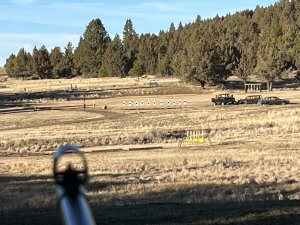
You are likely to be armed with a handgun outside your home. With a handgun, the term center of mass may be part of “center of available mass,” meaning the middle of whichever part of the hostage taker you can see around the hostage.
I spoke with a police sniper whose first shot at a head, over a hostage’s shoulder, appeared to miss. He was shooting at about 54 yards from a steady hold, braced on a tree, with a scoped Model 70 Winchester that he knew intimately. “No way I missed,” he thought.
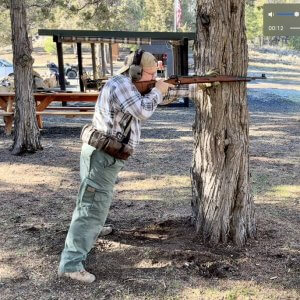
The police sniper immediately defaulted to the slice of the hostage taker’s body he could see: the center of available mass (4th zone targeted in our order of preference), since the head didn’t work, and neither the UCM nor the pelvis were available. That shot failed to connect as well.
That was when he realized that his first two shots had hit the lip of the courtyard wall he was shooting over. His SIGHTLINE THOUGH THE SCOPE had cleared the wall; but not the trajectory from the muzzle.
The sniper stood up on his tiptoes. From an off-hand, unsupported position, he hit the hostage taker in the head.
If you NEED to shoot him now, but all you have to shoot at is the left side of his rib cage, take the shot in the center of available mass, and be prepared to follow up with a head or heart shot as the opportunity arises.
What About the Legs or Arms as Target Zones?
If all you have to shoot at around the hostage is an arm or a leg, you may be best advised to wait till you have a better (or less bad) part of the hostage taker’s anatomy to shoot at.
In a gun battle, if all you have is an ankle to shoot at, by all means, shoot at it. The LAPD took out one of the North Hollywood bank robbers that way. They shot at his feet and ankles under a car, and then shot at the rest of him after he fell down.
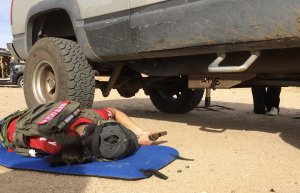
Historically, gun battles have not worked out well for hostages and bystanders caught up in the mix. There have been exceptions (Air France Flight 8969 at Marseille Provence Airport, 26 Dec 1994; Entebbe, 03 July 1976; Lufthansa Flight 181 in Mogadishu, 14 Oct 1977) but there have also been some disasters.
But even in a gunfight with no hostages, limbs are not a good choice as target areas.
Pros and Cons of Shooting at a Limb–Mostly Cons
During the 2020 BLM protests, a prominent politician was videoed saying something like “I don’t understand why the police, when an unarmed man comes at them with a knife, can’t just shoot him in the leg . . .”
He should have stopped at “I don’t understand,” or perhaps added “use of force at all.”
We could start with where in the universe a man with a knife is “unarmed,” but let’s not get distracted here. He was only pandering to the mob, as politicians on both sides of the aisle do, and in any event it worked, since he got elected. That was only one of many issues facing his electorate, but the fact that he did win the election after making such blathering, idiotic statements speaks volumes about the average American’s understanding of Force Application issues. And about his opponent, who was not reelected mostly because he himself tended to make blathering, idiotic statements.
Pop quiz:
- Does getting shot in the leg or arm hurt?
Gee, I dunno, Wally. I’ve never been shot in the arm or leg. But based on three decades as an EMT, I’m guessing that most of the time, it smarts like the dickens.
- Can a leg or arm wound result in permanent disfigurement, disability, and / or death?
YES!!!!! ABSOLUTELY!!!!!
- Can a person shot in the leg die actually from that wound?
YES!!!!! ABSOLUTELY!!!!!
- Then is shooting a man in the leg considered deadly force, with all its attendant legal, moral, and spiritual ramifications and liabilities?
Refer to previous answers. If you kneecap your neighbor for letting his dog poop in your yard, you will be tried and convicted of attempted homicide, and your defense of “But I let the EMTs put a tourniquet on him, which saved his life, and most wheelchairs really are quite comfortable” will not be considered an affirmative defense by either judge or jury.
- So why would I shoot someone in the leg or arm?
The answer given by those who know little about Use of Force comes from their feelings of humanity. “Well, I don’t want to harm or kill anyone.” We’ve already established the harm, though it is true that a shot to the leg is less likely to kill your assailant than a shot through the head. None of us want to harm or kill someone. So it’s appropriate to answer this question with a question. What are you trying to accomplish by shooting him at all?
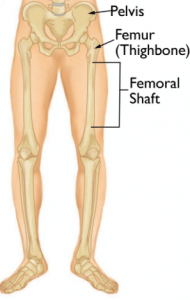
“Well, I want him to discontinue his aggression. To leave me alone. Preferably sooner than later.”
Shooting an assailant in the leg or arm may, but most likely will not, accomplish that goal. To be sure, being hit in the leg or arm is more likely to slow him down than not shooting him at all. But it will not stop a determined assailant from shooting or stabbing. A brain shot, spine shot, UCM shot, or pelvic shot (in that order) are more likely accomplish that goal, in less time.
That’s if you can hit it. Both arms and legs tend to be moving in interpersonal confrontations, which tend to be quite dynamic. When we teach “defanging the snake” edged weapons (EW) techniques, we caution students that if the bad guy’s knife hand is a blur, moving too fast to track, fall back on tracking his elbow, which doesn’t move quite as much.
If the guy is running, good luck hitting a leg at all. Remember, you are responsible for the final resting place of any bullet you launch at him, whether it hits him or not.
Even if you do hit a hostage taker in the thigh, this diagram illustrates that you are not likely to hit the femur. A pelvic shot is more likely to hit bone and stay in the person you are shooting. A leg shot is more likely to pass through flesh and out the other side of him, to careen through the neighborhood.
The shins move faster than the upper legs. The tibia is mostly hollow and spongy inside, but it is also one of the thicker bones in the body. The tib has a triangular cross section with one corner pointing forward. Bullets to the tib are more likely than, say, hits to the stronger femur, to glance off the angled surface. If they glance into the fibula, great. If not . . . and flanking hits to the calf will pass through meat, missing both bones, not remaining in the leg.
In sum, reasons NOT to try hitting an arm or leg, if you can avoid it:
- Higher likelihood of missing
- Lower likelihood of stopping the bad guy’s aggression or threat to the hostage, even if you do hit
- Greater likelihood of over penetration than head, chest, or pelvic shots (although glancing blows to the skull often careen off, rather than digging in)
- No less inhumane (quite possibly fatal to the bad guy anyway)–and certainly more inhumane for the bad guy’s victims, since he is less likely to stop doing what you shot him for in the first place.
Part C: Crimes Against Children
Kidnapping with Young Child / Baby as Hostage
If he’s already got a knife to a kid’s throat, your most important question–Should I intervene in some way?–is already answered.
Case study: Hostage taker on a bed, 10 Dec 2023
San Bernardino PD officers responded to shots fired in an apartment. A grandma called, stating that a woman who lived in the apartment (but was not a relative) was pointing a gun at her 3-year-old grandson.
The woman with the gun was on a balcony when the officers arrived. She pointed the gun at the officers, but they did not shoot (or even shoot at) her. Officer lives don’t matter.
The woman re-entered the apartment and barricaded herself in. Because a child was in danger, they did not hesitate. They forced their way in. The found the woman standing on a bed, with the three-year-old sitting on or behind the bed. The woman was pointing a gun at the kid.
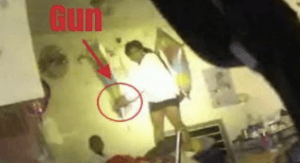
An officer shot her.
“The gun was pointed directly at the child’s head, and we couldn’t spend too much time negotiating and risk the safety of the child. The actions of the officer saved the child’s life.”
–San Bernardino PD Lt Jennifer Kohrell*
–BUT–
Some discussion of context is important here.
The vast majority of Amber Alerts we get are NOT about some Lindberg baby-esque stranger danger.
To be sure, we live in a fallen world. Stranger abductions do take place, far too often.
When I was a child living in the panhandle of Florida (“UCLA,” the “Upper Corner of Lower Alabama”), a neighbor’s child was playing in a back yard. A man jumped the back fence from the alley and took the kid when the mom wasn’t looking. The child was killed, and the mother later killed herself for letting it happen. As with swimming pools, it only takes a moment’s inattention to end the life of an innocent child.
I worked in a Child Exploitation Investigations unit for several years. Most of our search warrants were for consumers and sharers of child pornography, but we also served an arrest warrant on a guy who kept children in cages, forcing them to have sex on camera for food.
I wish I was making that up.
But most child abductions are by a non-custodial parent, who loves the child in their own imperfect way, and probably will not hurt the child intentionally, any more than the kid has already been emotionally damaged by their dysfunctional / broken home.
Back when I was, as my old friend Jay of CPD says, “paid to stick my nose in other people’s business,” I was working at a Texas airport, looking for human traffickers and smugglers. A man in his late twenties was walking from an arriving flight (from Michigan or Minnesota as I recall), holding a four-year-old girl who was walking beside him by the hand. The girl wanted to go one way, but he yanked on her arm to pull her a different direction (toward baggage claim), somewhat abruptly, as if he were tugging on the leash of an unruly dog.
I followed and observed them for a while. Something didn’t seem right. Kidnapping–especially involving movement across state lines–has been a federal crime since the Lindberg baby, but I decided to get the local uniforms involved (see below). Turned out he was the non-custodial biological father. The grandparents, who arrived to pick them up from the airport, had lawful custody of the child (and had a court order to prove it), because neither of the biological parents could act like adults during their bitter separation / divorce / custody battle.
You need to pass a hunter’s safety education course to get a license to shoot an arrow at a deer. Myriad regulations govern when, where, and how we hunt, so we can properly manage animal populations.
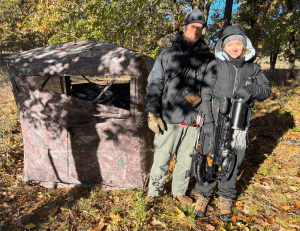
But if this young lady doesn’t have self-respect and common sense, she can legally make human babies with any scumbag loser she meets. Of course I’m not suggesting that we make people pass some sort of parental fitness test first . . . well, mostly not . . . but bad parenting, absent parents, lack of family structure, and lack of moral compasses, are all contributing factors to why I’ve chosen to spend my retirement teaching responsible people how to respond to violence, instead of drinking Mai Tais on a beach in Aruba.
Sometimes, a dad loses custody because he is molesting the child. More often, a single mom loses custody because she has a drug or alcohol habit and neglects or abuses the child. Far too many parents can’t manage their own lives, much less raise the next generation to be responsible citizens.
The point of all this gloom ‘n’ doom is that, even if you witness a man taking a child from a woman, you should examine the context. A non-custodial parent who is willing to live on the lam in order to be with their child may be irresponsible, and needs to be found and reported to police, but probably not to have their brains splattered all over their kid.
Being armed in public is an awesome responsibility, and has saved many lives, but it does not make you the police (unless you already are). As a responsible citizen who cares about the welfare of his or her fellow citizens,
- If you see someone breaking into a car, DO NOT APPROACH THEM, ESPECIALLY IF YOU ARE ARMED. Call the cops. Feel free to video tape his actions discreetly from a distance, for evidentiary purposes.
- If you see someone behaving suspiciously in your neighborhood, DO NOT APPROACH THEM, ESPECIALLY IF YOU ARE ARMED. Call the cops. Feel free to video tape his actions discreetly from a distance, in case something–or someone–turns up missing later.
- If you see two people who are obviously the parents arguing in front of their children over who gets custody this weekend, DO NOT APPROACH THEM, ESPECIALLY IF YOU ARE ARMED, even if one appears to be stuffing the kids into a car against the other’s, or even the children’s, will. Call the cops. Feel free to video tape the incident discreetly from a distance, which may help to illuminate the situation for a Family Law Court judge later.
- If you see somebody breaking a window and yanking a baby out of a car seat in Phoenix, Arizona in July, ASK YOURSELF WHY before you do something with your gun that you can never, ever, undo.
–BUT–
- If you see someone pulling a child who is screaming “You’re not my daddy! Leave me alone!” toward a car, you owe it to the child and the parents to INTERVENE RIGHT NOW and to at least make some inquiries, before they go mobile. Call the cops, or have someone else do that while you ask the man for ID. Even if the kid is just a brat who knows how to play the system to get their parent in trouble (the man will claim that, whether it’s true or not), a real, caring parent would want you to be sure. As Ronnie Ray-Guns said about the START treaty, “Trust, but verify.” Keep the conversation going long enough for the cops to get there and run him in NCIC.
Could a real kidnapper pull a knife or gun on you when you try to slow their exfil? Sure. Helping out a child in a dire emergency, whether it’s a kidnapping in progress or an overturned car with a hot engine leaking gas, involves some element of risk. But what sort of world would this be if nobody was willing to stick their neck out to protect a child, or even a fellow adult in need?
By the way, your own young children should be trained to fight like hell, and to raise a ruckus, and to yell “You’re not my daddy! Leave me alone!” if they are ever snatched. You should not let them out of your sight in public, but sometimes stuff happens.
Once, in a big box store, my wife and I agreed to get different items and then meet over by the toothpaste. Each one of us assumed the other would take our toddler along. When we rendezvoused in the dental care section, we were both terrified to discover that the other did not have our kid. Abandoning our stuff and racing over there, we found him standing where we had left him, a little confused (and skeptical about the sense of the parents God had saddled him with).
Even though you should never let your young children out of our sight for a second, you should also consider enrolling them in a radKIDS® course (radKIDS® | Children’s Safety Education), just in case.
Regarding stranger danger, consider a scenario like this:
You’re a security volunteer at your local mosque. A homeless guy who lives in the arroyo next door uses your mosque’s bathroom to wash up and get water on a regular basis. He’s been coming around for a few years and always seemed pretty harmless. Sometimes he sits and stares at the daycare kids from a bench some distance away, with a faraway look in his eyes. You assumed he missed his family, that maybe his alcoholism or drug habit cost him.
One day you get a frantic call from the daycare: he has snatched one of the kids. You see him running off campus with a toddler under his arm. When you intercept him, he uses the child as a human shield in front of his face and upper chest, and then pulls a knife and holds it to the kid’s throat.
What do you do?
Assuming you are armed (what good can unarmed security do that anybody with a cell phone can’t?) you scroll through your options of target areas listed above in descending order of effectiveness. The pelvic region appears to be the most effective open option, farthest from the baby, for your initial shot.
You will probably need to follow up with a head shot.
A hostage taker will have no reason to love you after you shoot him in the hip. He may become vindictive. Again, it is IMPERATIVE that he views you as a threat, in order to divert his attention (and his weapon) away from the hostage’s throat / head.
So the shooting solution here cannot just be static, and cannot be only shooting. You must use your feet and your voice as well. Advance on the threat. As you do, clearly and succinctly announce “I’m coming for you!” a double-entendre message for both the Hostage Taker and the Hostage.
If you are unarmed, you must close with the Hostage and be Visibly & Audibly Resolute (see above and Hostage Rescue in the Home).
But if I shoot him, won’t he drop the toddler? you think.
Well, yes. The theory here is you would not take the shot unless something even more dangerous for the kid than being dropped–like being eviscerated, having her throat slit, having his head shot off, or simply being taken away at the mercy of the irresponsible kidnapper–is probably imminent. You are not God, who can predict the future with 100% accuracy, so you go with what you know, using binary decision making based on either-or, worst-case scenarios.
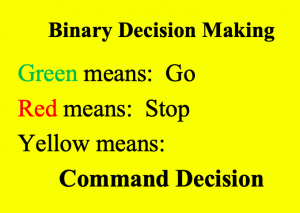
Case Study of a Dropped Child: Steve Rodriguez on the I-40 bridge**
When a man threatened to drop a child off a freeway overpass in Albuquerque, New Mexico, APD SWAT Sniper Steve Rodriguez kept him covered with a scoped rifle, trying to think of how he could keep the kid from being killed. Even if the 50 foot drop into the shallow Rio Grande didn’t kill the child, there was still the likelihood of drowning.
Steve had that rare combination of being patient and yet willing to make life-changing decisions on a moment’s notice. Steve waited for a solution to present itself.
When the I-40 hostage taker’s arms got tired of holding the toddler over the railing, he would occasionally bring the kid in to rest his arms. Steve took advantage of one such lull to cap the bad guy while the kid was over pavement.
The child dropped onto the sidewalk, but that was better than taking a 5+ story dive into the Rio Grande.
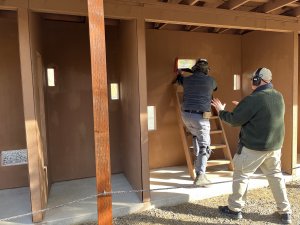
As far as I know, the child suffered no long-lasting ill effects from being dropped onto that sidewalk. Can’t say the same for diving into the shallow Rio Grande from several stories up.

Shooting a hostage taker, especially one holding a small child 4 or 5 feet off the deck, is not our first choice. But like trying to fly the plane when the engine quits after you have reached the Go – No -Go Point, you may need to. In our aviation analogy, there’s not enough runway left past the Go – No Go Point to stop the aircraft on the runway. In the case of the child hostage, we simply CANNOT let him leave with the child. If we do, the kid’s chances of survival go way down.
But we can’t take that shot if we can’t hit a motionless head sized target that is NOT behind a real hostage, on a square flat range.
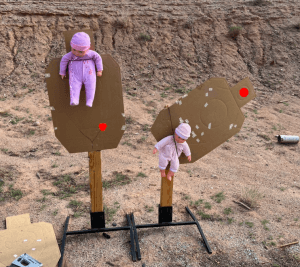
One way to practice rescuing child hostages with live fire:
In this photo from a previous Heloderm range session, both targets represent the same kidnapper. The target on the left represents a hostage taker as he hides his face and chest behind the child, before you shoot him in the pelvis. The leaning target on the right represents the same bad guy as he starts to go down after you shoot him. He may drop the child or hold it lower because he’s using one of his hands to catch his fall or, having been “stung,” may instinctively hold the baby in front of his groin to shield that region from further shots.
In this drill, you fire a total of two shots. ONLY two (2) shots.
The first shot goes into the pelvic region of the left-hand target (you could also set up this target array in a mirror image to the one above; start with whichever target is vertical and has the child in front of its head). Your ideal aim point is near the top end of the “Y,” about where the red keystone shape is. The pelvic region is the available target area most likely (or least unlikely) to incapacitate, that is also well clear of the hostage. [Note: The red keystone is on the side closest to the other target, since the second target represents him going down on the affected side; in real life, it really doesn’t matter which side of the Y you hit.]
After the first shot (and again, this is important), you begin to advance on the right-hand target, announcing “I’m coming for you!” The cardboard target does not have a weapon, but a real hostage taker probably will (feel free to paint one on there as you set up for this drill). In the real world we’ll need his real weapon pointed at us, not the kid. That’s why we advance: to “invade his space” not only with our bullets but with our body, so he perceives us as an immediate threat to his existence. Theoretically, this will keep his attention on survival, rather than revenge.
As you advance on the second (right hand, leaning) target, you place one careful shot in its head, where the red circle is in the picture.
Before you end the drill, follow-through. Pulling your handgun into a retention position back near your ribs as you close to within arms’ reach of the target, reach with your support hand for the child, as if to snatch the kid out of the hostage taker’s grasp. Be cognizant of your muzzle direction while doing so; since our hand is going to be forward of our muzzle, we don’t want it in FRONT of our muzzle.
Note: that photo above was from before we ran those live fire drills. Tape the over holes in the right-hand target was from a previous drill that did not involve a hostage, which explains why there are hits near the baby, in case you were wondering about that.
A Few Important Words of Warning
READING AN ARTICLE ON THE INTERNET, EVEN ONE WRITTEN BY A SO-CALLED “EXPERT” SO CLEARLY “ENLIGHTENED” AS I MAY APPEAR TO BE, IS NOT TRAINING.
Hostage Rescue is NOT for the untrained.
It is not a game. Hostage rescue situations are fraught with opportunities for things to turn terribly south on a dime. DO NOT THROW BULLETS AT SOMEONE HOLDING OR STANDING NEAR AN INNOCENT PERSON UNLESS YOU HAVE ABOSLUTELY NO OTHER REASONABLE CHOICE, no matter how good you are with a gun. And don’t even think about it unless you are very good with a gun.
Even the world’s best hostage rescue experts are not infallible. I once co-taught a night fire course with a GSG9 operator who had a negligent discharge while demonstrating something for our students. Thankfully, he was in the habit of pointing it in a safe direction.
Do what you gotta do, but understand that no matter what you do, it will not end well for somebody. Make sure it ends well for the hostage.
The best way to ensure that happens is to train, train well, and train more. Come up with practical plans that work for you and your family and then practice those solutions with them.
–George H, lead instructor, Heloderm LLC
*Quote and most of the info in this case study from Hunter Lee’s article “Calif. officers save 3-year-old held at gunpoint by suspect,” San Gabriel Valley Tribune (West Covina, CA 12 Dec 2023). In my day a person pointing a gun at the cops from a balcony would have been shot right there–at considerably less risk to both the officers and the public, since upward angled shots generally having fewer Rule Four (shoot through / overpenetration) risks to those behind. However, in the woke era police are simply expected to tolerate idiots pointing guns at them, praying the suspect doesn’t pull the trigger. If they had shot the person with the gun on the balcony, the child she later pointed the gun at (again) would have been less traumatized. He will never be able to unsee that woman pointing a gun at him, or her being shot right before his eyes. The best place and time to shoot a hostage taker is when they are away from the hostage.
**A version of this case study also appears in Movement to Contact.
